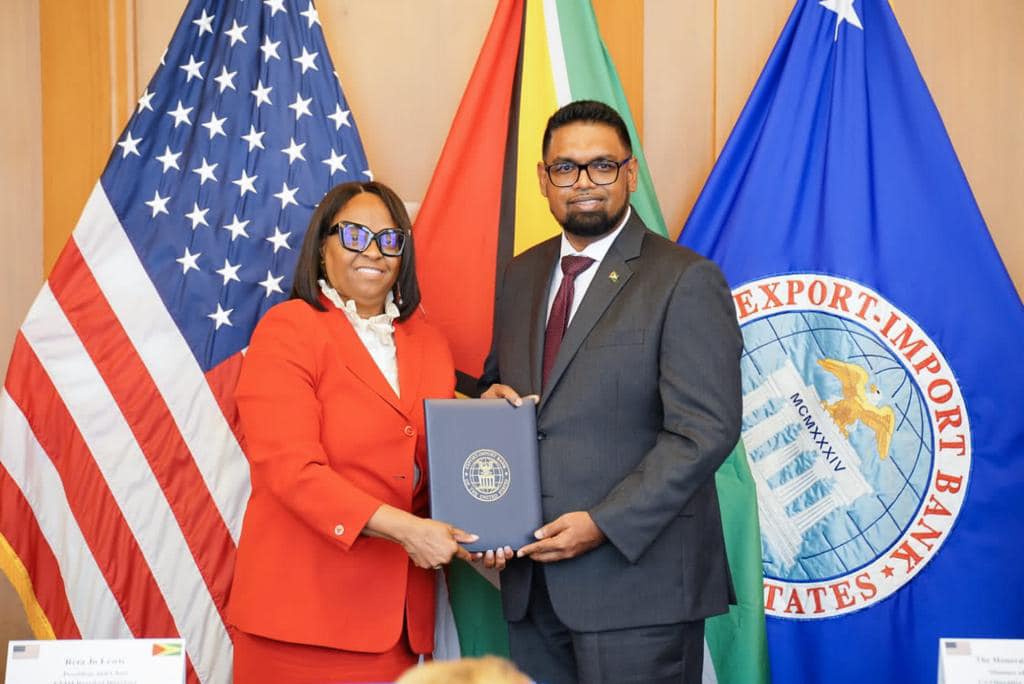The Export-Import Bank of the United States (EXIM) said the memorandum of understanding (MoU) it signed with Guyana on Wednesday, includes direct loans, loan guarantees, and insurance products, to finance the sale of US exports to Guyana for government projects totaling US$2 billion.
The Bank said the MOU includes several potential sectors in which projects may be identified, including but not limited to infrastructure (including roads and bridges); energy (including renewable energy and emission reduction); telecommunications (including wireless technologies); water treatment and sanitation (including technologies and infrastructure); and agriculture.
Strengthening Guyana’s relationship with the United States | OilNOW
Guyana is undergoing development at a pace the country has never before experienced. The projects available to it under this EXIM Bank package are consistent with its sustainable development drive. President Dr. Mohamed Irfaan Ali called the signing, “the single most important signature not only for Guyana but for the region.”
The agreement promotes the utilization of goods and services made in the US.
US envoy offers American solutions to Guyanese businesses looking to adopt renewable tech | OilNOW
EXIM President and Chair Reta Jo Lewis said, “We are deeply committed to helping America’s exporters compete around the world and finding opportunities with partner countries to advance projects and deals that can create better trade flows and advance shared prosperity.”
The Bank said this would deepen trade and economic ties between the countries, following the launch of President Joe Biden’s Partnership for Global Infrastructure and Investment (PGII). This is a US$200 billion package meant to promote infrastructure development in low- and middle-income countries over the next five years. It focuses on the advancement of sustainable development, with aims of combatting the climate crisis, safeguarding global health and health security, accelerating technological transformation in the face of a growing digital divide, and advancing gender equity.



